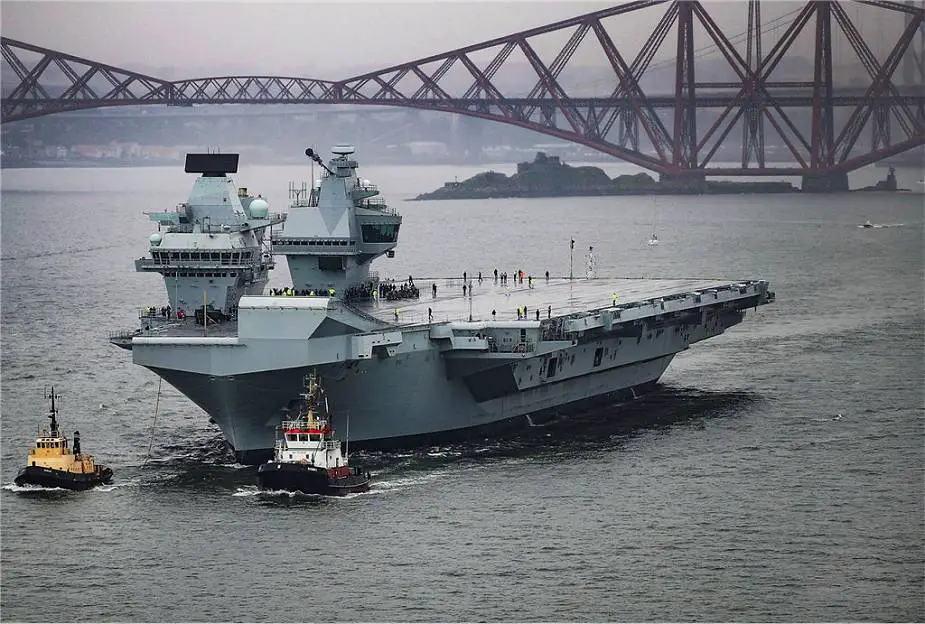According to a Tweet released on June 3, 2020, by Navy Lookout, the HMS Prince of Wales, the second Queen Elizabeth-class aircraft carrier of the British Navy will be used in the future to test large unmanned aerial vehicles (UAVs).
According to a Tweet released on June 3, 2020, by Navy Lookout, the HMS Prince of Wales, the second Queen Elizabeth-class aircraft carrier of the British Navy will be used in the future to test large unmanned aerial vehicles (UAVs).
Follow Navy Recognition on Google News at this link
 Britain’s newest aircraft carrier, The Prince of Wales, pictured sailing from Rosyth Dockyard for the very first time. (Picture source British MoD)
Britain’s newest aircraft carrier, The Prince of Wales, pictured sailing from Rosyth Dockyard for the very first time. (Picture source British MoD)
This drone project will be developed in collaboration with the 700X Naval Air Squadron, this unit was formed to oversee the development and innovation of cutting-edge remote-piloted flight systems within the British Navy.
According to news released on February 2019 by "The News" website, United Kingdom is looking to create a new state-of-the-art unmanned aerial vehicle (UAV) that could fly from the decks of the British Navy’s two new aircraft carriers.
The British Navy is looking to use aircraft carrier HMS Prince of Wales in 2021 as an experimental platform and with a view to challenging British services and industry as to whether or not they can get large drones flying from the aircraft carrier as a technology demonstrator inside the next five years.
The HMS Prince of Wales (R09) is the second Queen Elizabeth-class aircraft carrier of the British Navy. Unlike most large aircraft carriers, Prince of Wales is not fitted with catapults and arrestor wires, and is instead designed to operate V/STOL aircraft. The ship is currently planned to carry up to 40 F-35B Lightning II stealth multirole fighters and Merlin helicopters for airborne early warning and anti-submarine warfare, although in surge conditions the class is capable of supporting 70+ F-35B.
Since many years, the US Navy has already conducted trials with drones on aircraft carriers. The US Navy's X-47B drone, landed on the USS George H W Bush off the coast of Virginia, its first landing on a ship in July 2013.
American company Boeing is bringing the future of unmanned aircraft carrier aviation to the U.S. Navy with its MQ-25. An unmanned aircraft system designed for the U.S. Navy mission, it will provide the needed robust refueling capability thereby extending the combat range of deployed Boeing F/A-18 Super Hornet, Boeing EA-18G Growler, and Lockheed Martin F-35C fighters.







